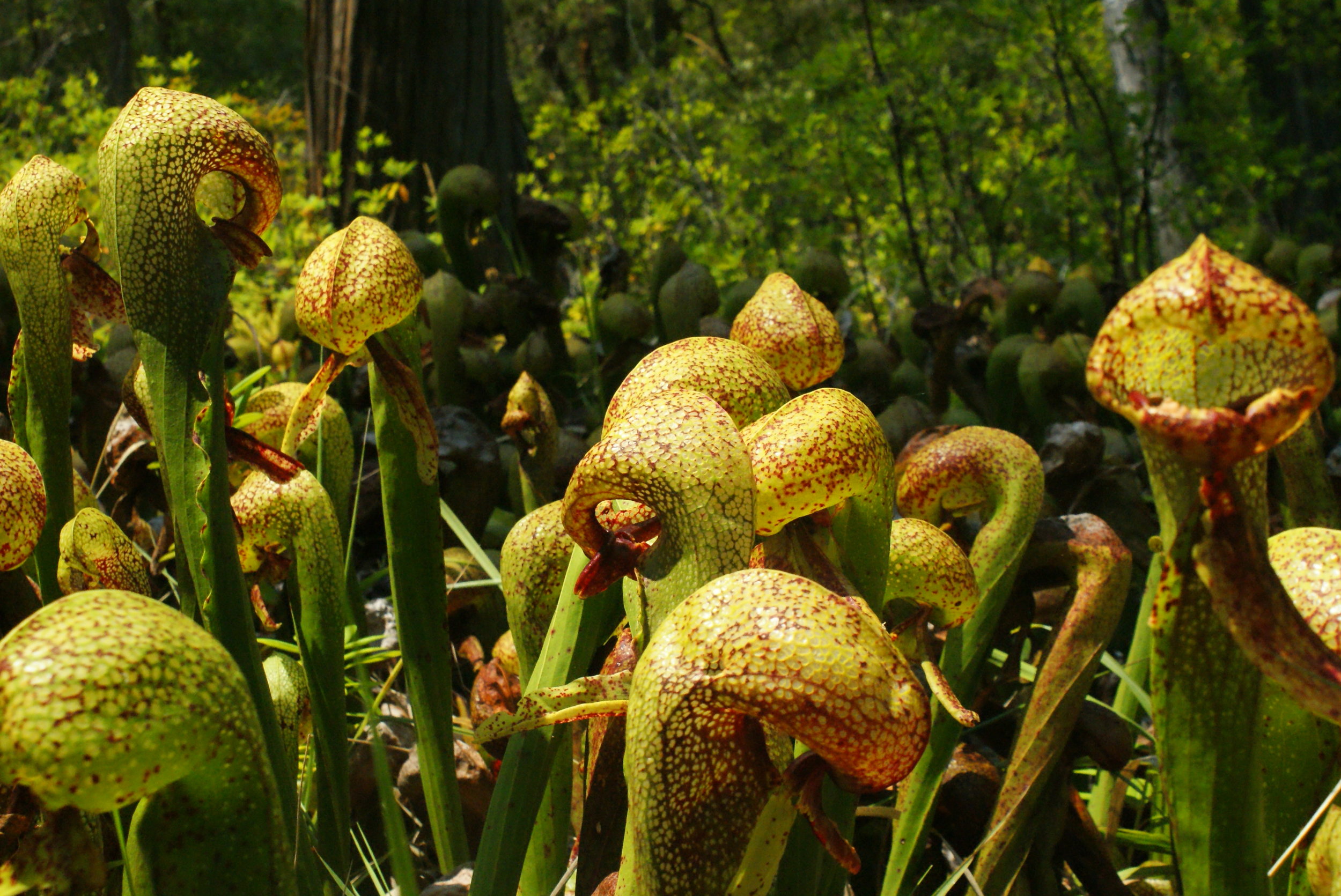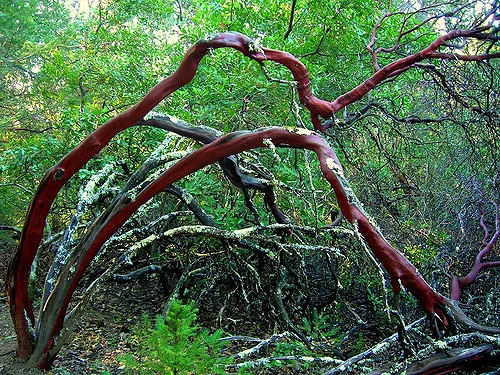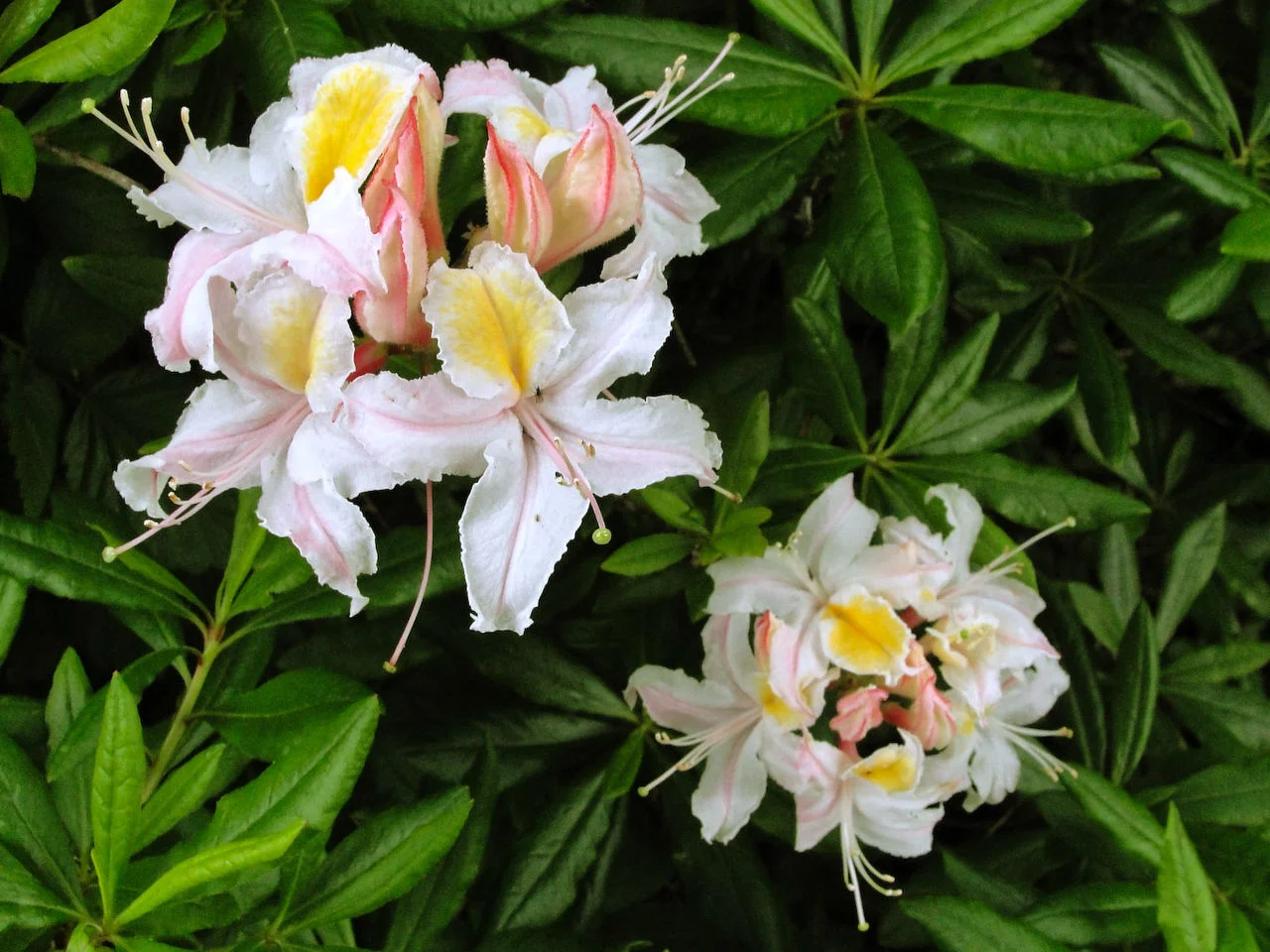The Pacific fisher (Martes pennanti), an ecologically important forest carnivore, lives in low elevation old-growth forests of the northern United States and Canada.
Read MoreThe Klamath-Siskiyou is a treasure trove of various ecosystems such as fire-dependent oak savannas, redwood forests, and clear rivers lined with azaleas, rhododendron and manzanita. Serpentine soils support scores of rare plant species, native bunch grasses, Jeffrey pine savannas and unique wetlands, known as serpentine fens.
Read MoreThe California pitcher plant, or Cobra Lily, (Darlingtonia californica), is a rare carnivorous plant of serpentine wetland communities
Read MoreKalmiopsis leachiana, a plant discovered in 1930 by Lilla Leech in the Gold Basin area, is a relic of the pre-ice age and the oldest known member of the Heath (Ericaceae) Family.
Read MoreGreen Sturgeon are truly a prehistoric creature, possessing a skeleton that is more cartilage than bone and rows of bony plates for protection rather than scales.
Read MoreGentner’s fritillary (Fritillaria gentneri) is a red-flowering herb that is part of the Liliaceae or lily family.
Read MoreThe marbled murrelet (Brachyeamphus marmoratus) is a pacific seabird that nests in trees in older coastal forests in North America and Asia.
Read MorePacific lamprey (Lampetra tridentata) is a parasitic eel-like species that has no true jaw, bones or fins.
Read MoreThe red tree vole (Arborimus longicaudus) is a small rodent found in the coastal mountains and western Cascades of Oregon.
Read MoreNorth American wolverines have been listed as a threatened species in Oregon by the Oregon Department of Fish and Wildlife since 1989. In December 2000, KS Wild and a coalition of groups, led by the Center for Biological Diversity, filed a lawsuit against the U.S. Fish and Wildlife Service for failing to list this wildlands-dependent forest carnivore.
Read MoreYreka phlox (Phlox hirsuta) is a perennial subshrub in the Phlox or Polemoniaceae family that is endemic to Siskiyou County, California.
Read MoreManzanitas are evergreen shrubs, they typically have smooth red bark that peels and flakes off like Madrone bark. Manzanitas sport rounded symmetrical leaves, they range in color from gray to bright green and often have a waxy texture.
Read MoreAzaleas are shade-tolerant shrubs that are often found living beneath, or close to, trees. They bloom in the spring and flower in a verity of different colors.
Read MoreMount Ashland Lupine is endemic to Mount Ashland, and is found in open areas above 6800 feet on the south and west slopes and near the mountain's summit.
Read MoreGreene's Mariposa Lily is native to Oregon and California and is included in the CNPS Inventory of Rare and Endangered Plants, listed as: rare, threatened, or endangered in CA and elsewhere.
Read MoreSiskiyou mariposa (Calochortus persistens) lily is a pink flowering perennial herb that is endemic to Bald Mountain near Ashland, Oregon, and Gunsight Peak and Diggles Gulch in Siskiyou County, California.
Read MoreThe Klamath-Siskiyou is a treasure trove of various ecosystems such as fire-dependent oak savannas, redwood forests, and clear rivers lined with azaleas, rhododendron and manzanita. Serpentine soils support scores of rare plant species, native bunch grasses, Jeffrey pine savannas and unique wetlands, known as serpentine fens.
Read More















